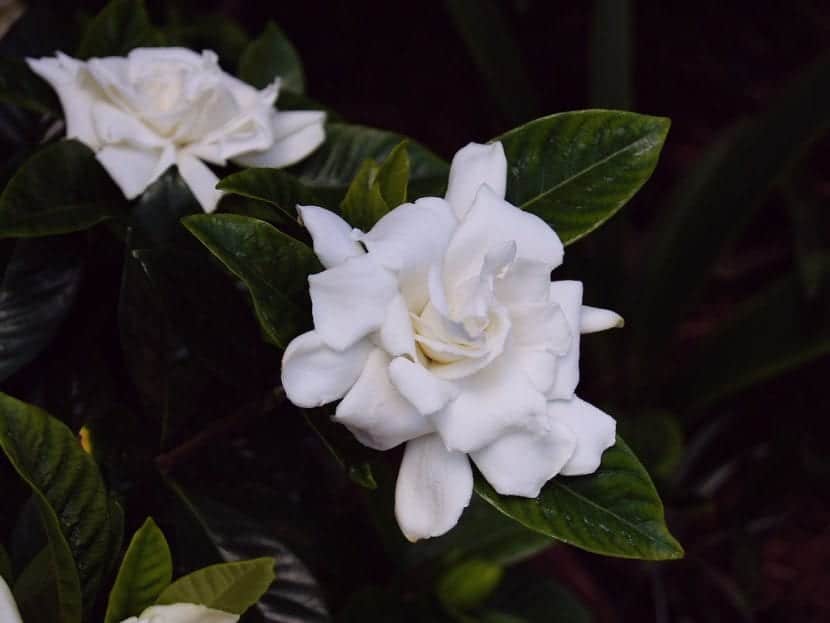
Who has not ever heard of gardenia? You may even be growing it in your yard or garden right now, but you don't really know how you can make it look as pretty as the first day. If that's the case, don't worry, you're about to discover the best-kept secrets of that precious plant.
And no, it is not a joke. I am going to tell you not only what its characteristics are, but also something very important such as its care And maintenance.
Origin and characteristics
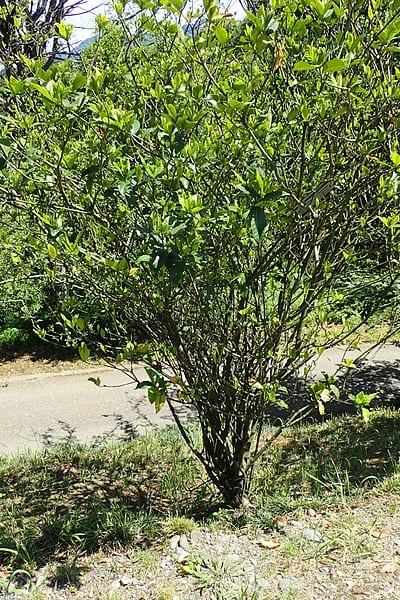
Our protagonist is an evergreen tree native to Asia that is found mainly in Vietnam, southern China, Taiwan, Japan, Burma and India. Its scientific name is Gardenia jasminoides, although it is popularly known as Cape jasmine, false jasmine or simply gardenia. Reaches a height of 2 to 8 meters, and has leaves of 5-11 by 2-5,5 cm, elliptical or obovate-elliptical, slightly leathery, glabrous, of a glossy dark green color.
The flowers are solitary, terminal, fragrant, white in color, and about 2-3cm in diameter.. The fruit is elongated and somewhat swollen in the center, and is about 2-3cm long when ripe. Inside are numerous small seeds. The plants that are grown do not usually produce it.
How to care for a gardenia?
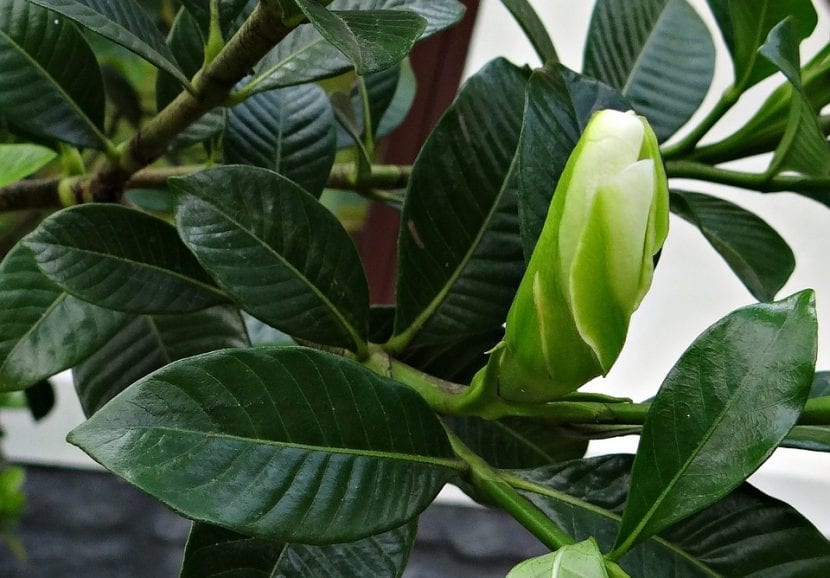
If you want to have a copy, we recommend that you provide it with the following care:
Location
- InteriorGardenia can be indoors, as long as it is placed in a room with plenty of natural light and away from drafts (both cold and warm).
- Body exterior:: in semi-shadow.
Earth
- Flower pot. substrate for acidic plants (you can get it here). But if the climate is Mediterranean or warmer (with strong sunshine) I advise planting it in akadama (you can get it here).
- Garden: the land must be fertile, light, with good drainage. and acid (pH 4 to 6).
Irrigation
The frequency of irrigation will depend a lot on the climate and growing conditions, but in principle you have to water it about 3 times a week in summer and every 3-4 days the rest of the year. Use rainwater, lime-free, or acidified (it is achieved by diluting the liquid of half a lemon in 1l of water, or a tablespoon of vinegar in 5l / water).
Subscriber
From early spring to late summer you must pay it with specific fertilizers for acid plants (like this one from here) following the instructions specified on the package. Still, I advise using also ecological fertilizers in alternate months so that you do not lack anything.
Planting or transplanting time
You can plant it in the garden in spring, as soon as the risk of frost has passed. If you have it in a pot, change it to a larger one every two years following the steps that are explained here.
Pruning
At the end of winter, dry, diseased, or weak stems should be removed.. In spring you have to trim those that are growing too much so that it produces lower ones, making the plant acquire a more compact shape.
Pests
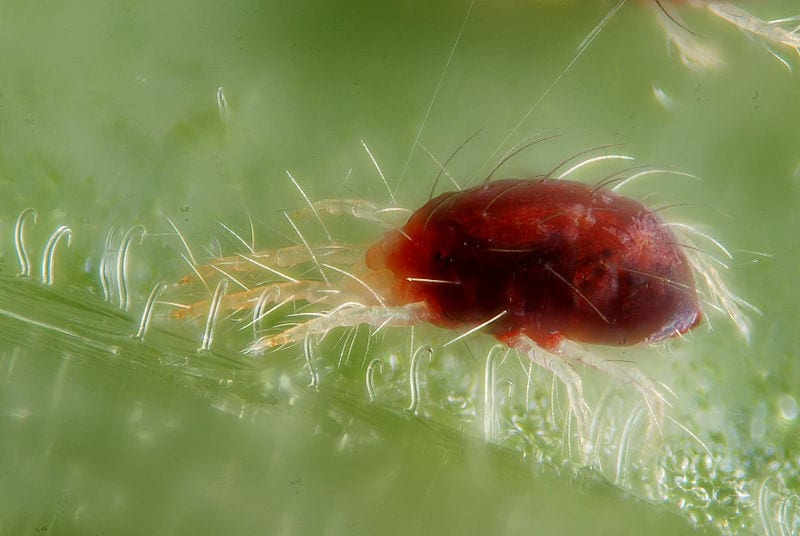
It can be affected by:
- Red spider: it is a mite of about 0,5 cm of red color that causes discolored spots on the leaves and that weaves cobwebs. It is fought with acaricides.
- Mealybugs: they can be cottony or limpet-like. You will find them on the underside of the leaves and on the most tender stems. You can remove them by hand or with a cochineal insecticide, and even diatomaceous earth will work for you if you are looking for something that is natural. The dose of this soil is 35g per liter of water. You can get it here.
- White fly: it is found between the leaves, since it feeds on their cells. They fight well by simply spraying the plant with lime-free water regularly during the summer (do not do it in winter to avoid rot).
- Aphids: they can be yellow, green or brown. They measure about 0,5cm and stay on the leaves, from where they feed. They are controlled with yellow sticky traps (for sale No products found.).
Management
It can be affected by:
- Botrytis: it is a fungus that affects flowers, preventing them from opening. It also causes rotting of leaves and branches. You have to remove everything that is sick and treat with fungicide.
- Powdery mildew: it is a fungus that is manifested by a whitish powder on the leaves. It is also treated with fungicides.
Multiplication
Multiply by semi-woody cuttings in late spring. To do this, you simply have to cut 10-15cm long stems that have 2-3 pairs of leaves, impregnate the base with homemade rooting agents or liquid rooting hormones (you can get these here) and plant in a pot with substrate for acidic plants or akadama.
It will emit its own roots in 6-8 weeks.
Rusticity
The gardenia that is usually sold in nurseries is usually a very sensitive plant to cold since they have them in greenhouses, so this has to be kept indoors during the winter. Now, if you have the opportunity to get one that is outside, you will see how its rusticity will be greater.
What's more, I can tell you that I have one that has already survived two Mediterranean winters with frosts of up to -1.5ºC (I know, it is little, but it must be borne in mind that greenhouse gardenia cannot withstand temperatures of 10ºC or less) .
What is the meaning of gardenias?
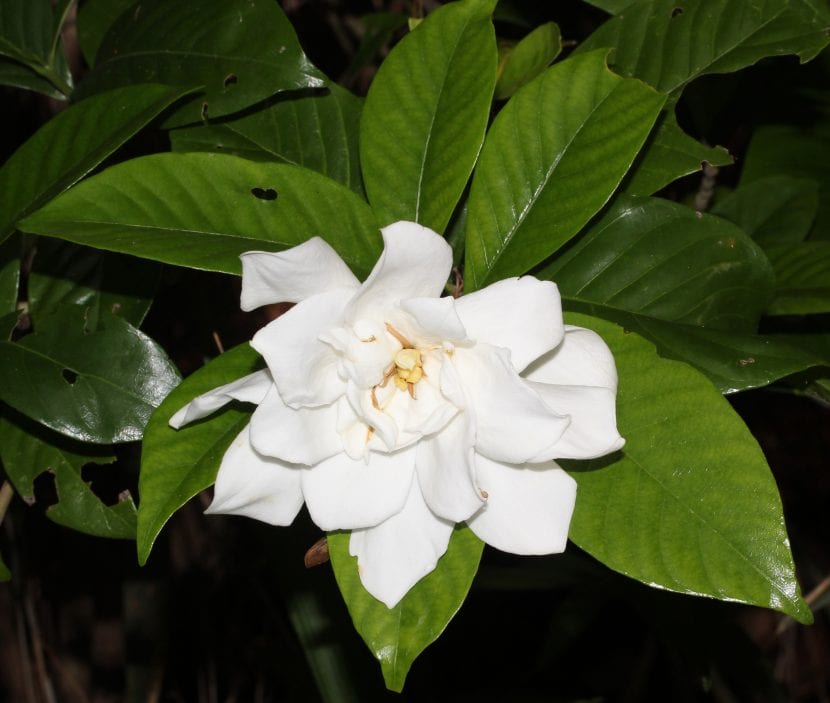
To finish, surely you want to know what gardenias mean, right? Well they symbolize something very beautiful: sweetness, purity, and the appreciation that we can feel for someone. And they are ideal plants to give to any loved one.
What did you think of this article?
Hello Monica, the blog is very nice and educational; I have a very beautiful plant in the garden, which I think may be a gardenia variety, but no one has been able to get me out of my doubts. Is there a page where I can put a photo of the plant and tell me what it is called?
Thank you very much for your attention
Hi Jazmin.
Yes, you can send us a photo to our Facebook profile.
A greeting.
HELLO MONICA I LOVE YOUR BLOG, IT IS VERY USEFUL ... DO NEEHM OIL AND POTASSIUM SOAP SERVE INSECTICIDES ALSO FOR JASMINES?
Hello Gabriela.
We are glad that you like the blog (which by the way is not mine, but I only collaborate 🙂).
Regarding your question, yes, of course. They can be used for any plant.
Greetings.
Hello Monica
I have a problem with my jasmine. The jasmine has a height of approximately 60 cm and is planted in the garden, it gives direct sun almost all day until 4-5.
I put nitrogen, phosphorus, etc. approx. 100 grams and iron sulfate I put 60 grams 3 or 4 tablespoons.
I watered it every day a little so that the surface is wet and I put potassium soap every 15 days
The issue is that in a few days about a week it turned all yellow and some leaves with spots and I don't know why. I await your saving response hahaha
Hello Agustin.
What plant do you mean by jasmine? If it is the gardenia, it is preferable to protect it from the sun. As for watering, it is better to water a lot and a few times than little and daily. Let me explain: when you water, you have to pour water until the soil is very moist, about 2-3 times a week.
If you add just a little to wet the surface, the water does not reach the roots that are lower and, therefore, they can dry out.
On the other hand, I suspect you have a fertilizer overdose. You have to follow the instructions for use so that the plant can make good use of it.
My advice is the following: protect it from the sun, and water less but pour more water.
Luck!
Thank you sissi the cape jasmine is, the rudeness and it had all the mass of earth with which it came when I bought it that it came in a pot, it was all hard, it looked like clay, I removed it with water and put it back with compost and new soil.
it's still turning yellow.
What amounts of fertilizer and how often do you recommend me to apply?
iron and nitro fosca so I don't kill her ajajajjja
I leave you the link of the jasmine so you understand me better and see what happens to her.
I transplanted this jasmine as soon as I bought it.https://ibb.co/tPn2BBM
https://ibb.co/fDWw3x4
https://ibb.co/FsXdQRJ
Hello Agustin.
The new leaves seem to be very healthy, so I recommend you simply fertilize it with a liquid, acidic plant fertilizer, so that the roots absorb it faster. Of course, read and follow the instructions for use on the container.
Greetings.
Good morning me again
The leaves are drying out now, how often do I have to pay with nitrogen and how often do I have to throw away iron?